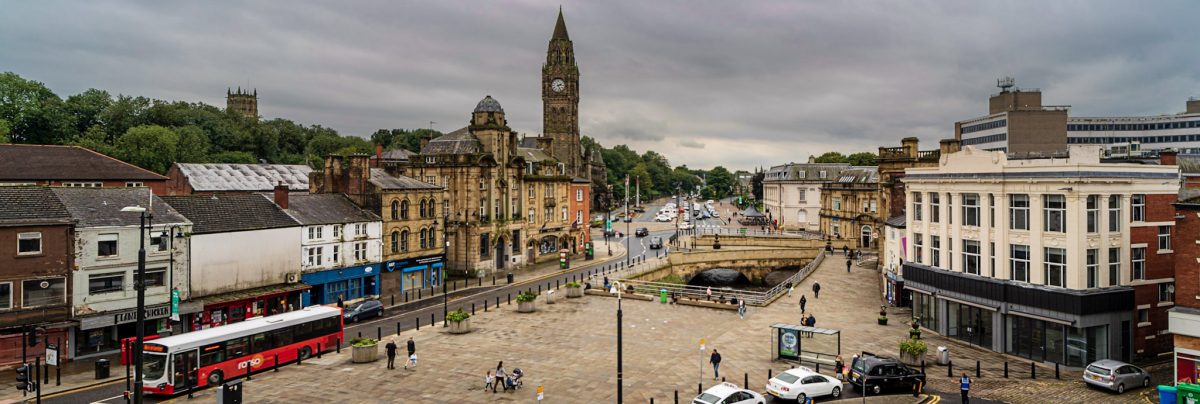
If you read the Matthew’s account of the week up to the death of Jesus, it can often seem like pretty bleak. On the Thursday, when they celebrated the Jewish Passover meal together, we find Jesus announcing that he will be betrayed and identifying Judas as the betrayer (Matthew 26:25). We also have his declaration that all his disciples will fall away (Matthew 26:31). There is a special emphasis on Peter, perhaps Jesus’ closest disciple, denying him (Matthew 26:34). Before the evening has ended, Jesus has indeed been betrayed by Judas, the disciples have fled, Peter has denied him and Jesus himself has been arrested, tried by a “kangaroo” court, condemned and beaten.
It doesn’t seem like the most natural place to find Easter hope. And yet we find signs of hope throughout, especially in the Lord’s Supper recorded in Matthew 26:27-29.
Let me show you just three places where hope shines through in the text.
The Passover
The setting of that Thursday night was the Passover, which Jesus deliberately organizes to celebrate with his disciples. Read the word Jesus gives the disciples to tell the man whose house they will eat in in:
“My appointed time is near. I am going to celebrate the Passover with my disciples at your house.”
(Matthew 26:18 NIV)
Why is this a sign of hope? Well the Passover was all about being rescued. It was a ritual that God had put in place to remind the Israelites that he had rescued them from slavery in Egypt. In fact, in the original Passover, the lamb was killed and eaten and the blood was painted on the Israelite doorposts so that the Israelite firstborn sons would be protected from the plague of death God sent on the Egyptians.
So the context of this Thursday night was the Passover – rescue from death by the blood of a sacrificial lamb. And Jesus is determined to celebrate this event with his disciples.
Things might seem bleak, but God has form for rescuing his people from the bleakest of situations! That’s hopeful.
Forgiveness
Jesus takes over the Passover meal and brings in a new ritual or ceremony – one that will be celebrated all over the world by Christians this Easter (and throughout the year). What we now call the Lord’s Supper (or Communion).
What’s interesting is that Jesus updates the rescue theme of the Passover and applies it to his death. We read:
Then he took a cup, and when he had given thanks, he gave it to them, saying, “Drink from it, all of you. This is my blood of the covenant, which is poured out for many for the forgiveness of sins.
(Matthew 26:27-28 NIV)
Jesus is making himself the new Passover lamb. He knows his death is coming and he explains why. When his body is broken and his blood shed on the cross the very next day he’ll be opening up a new way of relating to God (a covenant) by forgiving sins.
Why is this a sign of hope? The bleakness of that Thursday and what will follow is a result of sin. Since Adam and Eve rejected the rule of God and went their own way, every human being has followed their pattern. Our sin (rejection of God and rebellion against him and his ways) means we’re on a collision course with an all-powerful and rightly angry God. There is only going to be one loser in that meet-up. When we stand before God he will judge us guilty and we will face our punishment for rejecting him (what we call hell).
Now this isn’t sounding very hopeful yet, but do you see the point? If the sacrificial lamb of the Passover could protect the Israelite firstborn from death, the sacrifice of Jesus can protect us from the punishment for our sin. In fact, by his death Jesus will give those who believe in him “forgiveness of sins.”
Now that is hopeful! Jesus is telling us that because he dies as a sacrifice for us, we can be forgiven for all the wrong things we have done and forgiven by the most important person we have sinned against – God!
The God who rescued his people from Egypt is at it again, but this time he is rescuing his people from sin and hell!
The Future
If you weren’t reading Matthew’s account carefully, you might think the outlook for Jesus was only bleak. The cross certainly was going to be bleak for him. But the cross wasn’t going to be the end for him. Jesus kept telling his disciples that. Straight after talking about his sacrifice he says:
“I tell you, I will not drink from this fruit of the vine from now on until that day when I drink it new with you in my Father’s kingdom.”
(Matthew 26:29 NIV)
This makes it clear that the cross is not going to be the end for Jesus – resurrection is coming (Jesus is explicit about a few verses on in Matthew 26:32). But it’s rather more than that. Jesus is saying that there will come a time when he will drink in celebration, at a banquet even, when the kingdom of God fully comes.
Theologians call this the Messianic banquet, which is actually just a pretty amazing way of describing the perfect new world that Jesus will one day bring in for his followers (what we often call heaven) which will be the most wonderful celebration.
Now that is a hope to keep any of us going – whatever we’re facing. If we trust Jesus, we will one day be celebrating with him forever in the most wonderful perfect world.
This Easter, maybe it’s time to look to Jesus to provide hope. And isn’t it wonderful that Jesus left us the visual reminder of that hope, so that every time we take the Lord’s Supper together we remember the cross and so remember God sent Jesus as a Saviour to forgive our sins and lead us to an eternal banquet in his kingdom.
